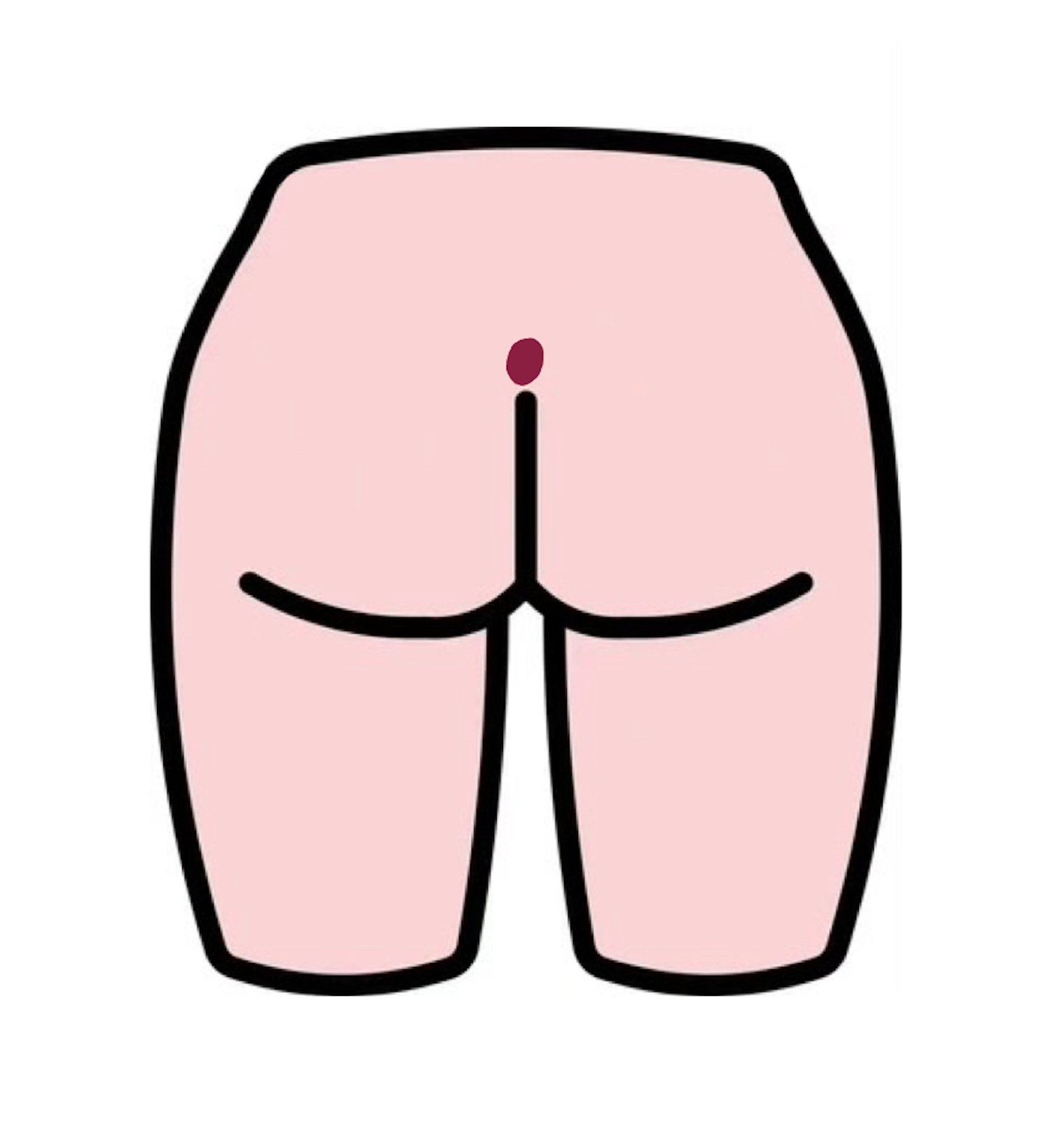Pilonidal cyst derives its name from Latin pilus (hair) and nidus (nest). O.H. Mayo was the first to describe the disease in 1883.
Etiology
- Risk factors: male sex, family history, overweight/obese, trauma, irritation, sedentary lifestyle, hirsute habitus, poor hygiene
Pathogenesis
- Shed hair is drawn into the gluteal cleft by the motion from the buttocks, which creates a vacuum effect forcing the hair into the skin. The foreign body reaction produced by trapped hair may lead to a hair-filled abscess cavity, which can drain spontaneously through the skin or back through the sinus tracts.
Physical Exam
- Acute abscess cephalad to the gluteal cleft
- Sinus openings along the midline of the gluteal cleft, 4 – 8 cm from the anus → hallmark finding
Imaging
- Dye (e.g., methylene blue) may be injected for better identification of complicated sinuses. It must be done several days before surgery to avoid excessive staining of the operative area.
Treatment
- Simple incision and drainage
- Pilonidal cyst excision
Relevant Information
- The location of a pilonidal cyst is different from a perirectal abscess. Perirectal abscesses are found near the anus.
Complications
- Recurrence
- Wound breakdown
- Infection
Differential Diagnoses
- Abscess
- Hidradenitis suppurativa
- IBD
- Anal fistula
- Epidural abscess
- Folliculitis
- Furuncles
- Carbuncles
